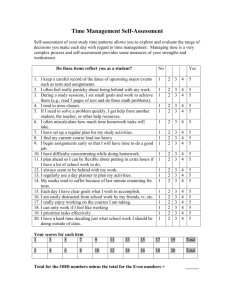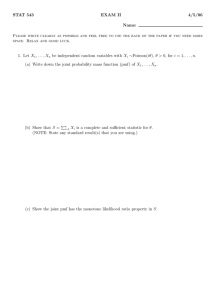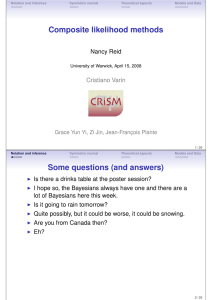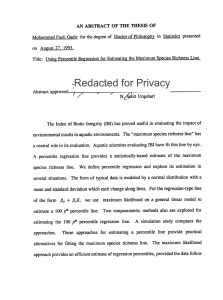Hint: Problem 8.38
advertisement
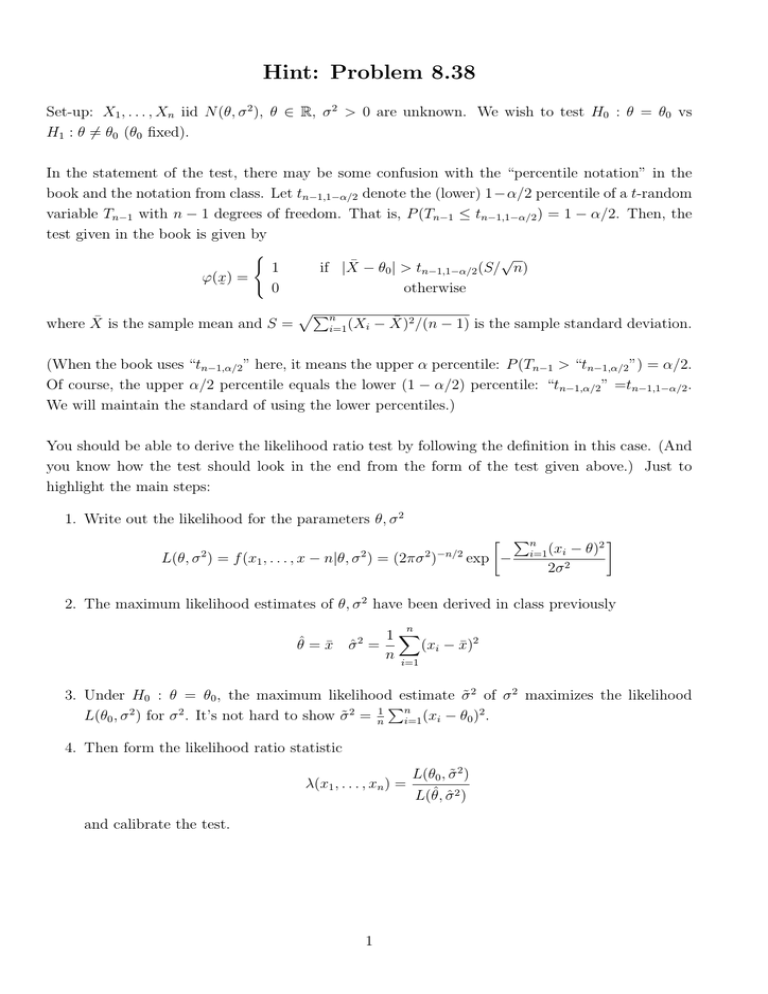
Hint: Problem 8.38 Set-up: X1 , . . . , Xn iid N (θ, σ 2 ), θ ∈ R, σ 2 > 0 are unknown. We wish to test H0 : θ = θ0 vs H1 : θ 6= θ0 (θ0 fixed). In the statement of the test, there may be some confusion with the “percentile notation” in the book and the notation from class. Let tn−1,1−α/2 denote the (lower) 1−α/2 percentile of a t-random variable Tn−1 with n − 1 degrees of freedom. That is, P (Tn−1 ≤ tn−1,1−α/2 ) = 1 − α/2. Then, the test given in the book is given by ( √ 1 if |X̄ − θ0 | > tn−1,1−α/2 (S/ n) ϕ(x) = 0 otherwise ˜ where X̄ is the sample mean and S = pPn i=1 (Xi − X̄)2 /(n − 1) is the sample standard deviation. (When the book uses “tn−1,α/2 ” here, it means the upper α percentile: P (Tn−1 > “tn−1,α/2 ”) = α/2. Of course, the upper α/2 percentile equals the lower (1 − α/2) percentile: “tn−1,α/2 ” =tn−1,1−α/2 . We will maintain the standard of using the lower percentiles.) You should be able to derive the likelihood ratio test by following the definition in this case. (And you know how the test should look in the end from the form of the test given above.) Just to highlight the main steps: 1. Write out the likelihood for the parameters θ, σ 2 2 2 2 −n/2 L(θ, σ ) = f (x1 , . . . , x − n|θ, σ ) = (2πσ ) ¸ · Pn 2 (x − θ) i exp − i=1 2 2σ 2. The maximum likelihood estimates of θ, σ 2 have been derived in class previously n 1X θ̂ = x̄ σ̂ = (xi − x̄)2 n i=1 2 3. Under H0 : θ = θ0 , the maximum likelihood estimate σ̃ 2 of σ 2 maximizes the likelihood P L(θ0 , σ 2 ) for σ 2 . It’s not hard to show σ̃ 2 = n1 ni=1 (xi − θ0 )2 . 4. Then form the likelihood ratio statistic λ(x1 , . . . , xn ) = and calibrate the test. 1 L(θ0 , σ̃ 2 ) L(θ̂, σ̂ 2 )








